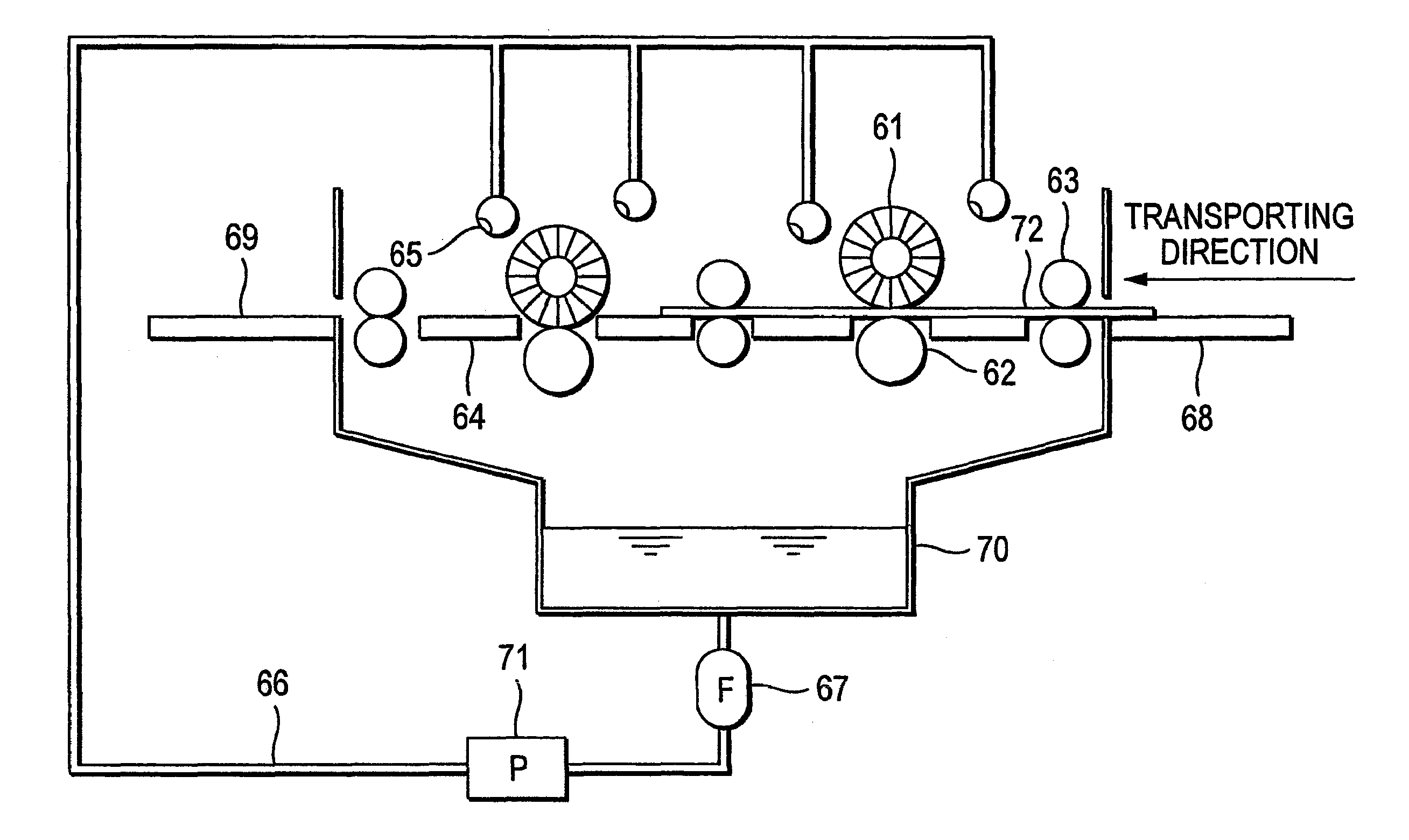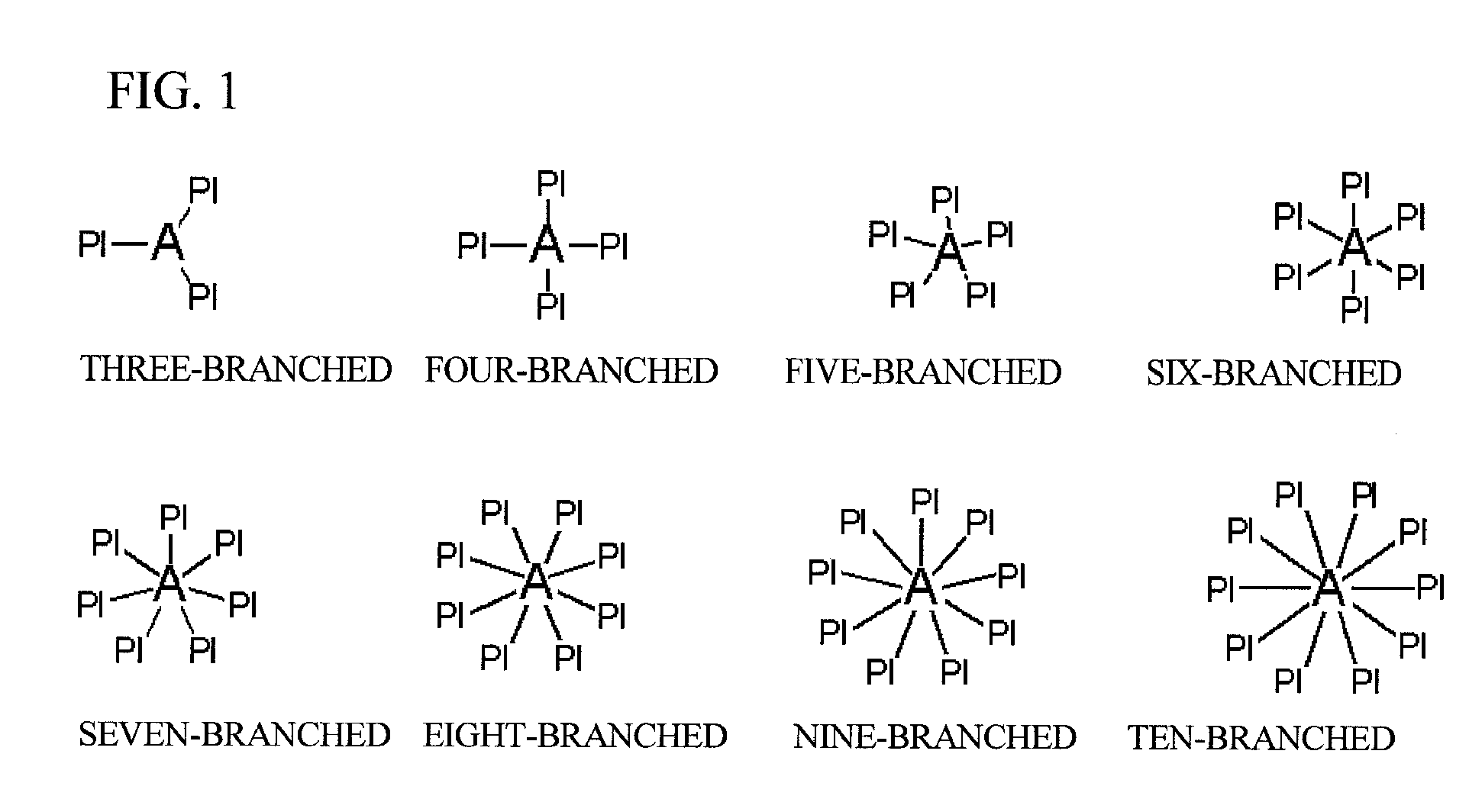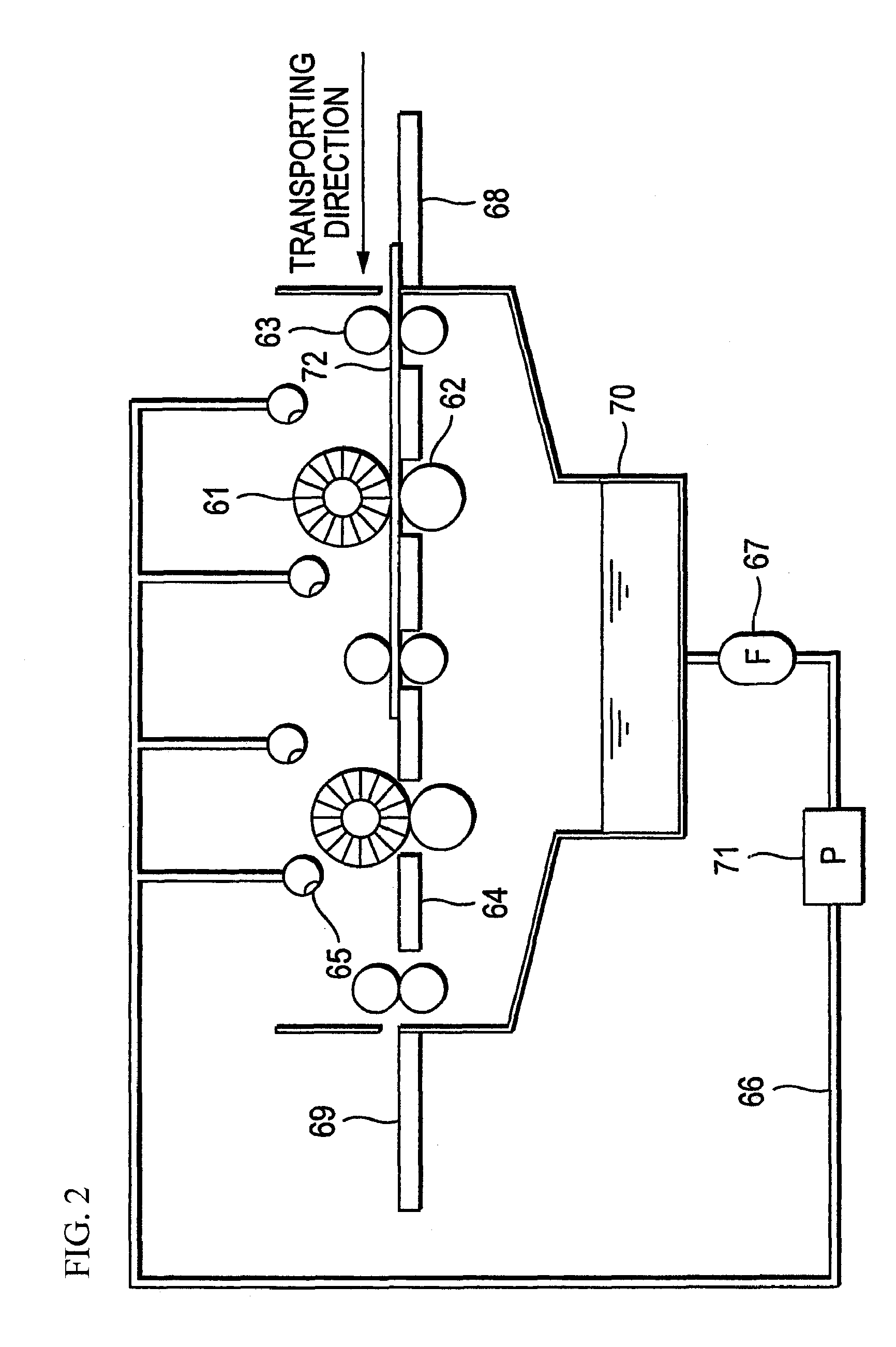Lithographic printing plate precursor and plate making method thereof
- Summary
- Abstract
- Description
- Claims
- Application Information
AI Technical Summary
Benefits of technology
Problems solved by technology
Method used
Image
Examples
Example
Examples 1 to 6 and Comparative Example 1
I. Preparation of Lithographic Printing Plate Precursors (1) to (7)
(1) Preparation of Support 1
[0278]An aluminum plate (material: JIS A 1050) having a thickness of 0.3 mm was subjected to a degreasing treatment at 50° C. for 30 seconds using a 10% by weight aqueous sodium aluminate solution in order to remove rolling oil on the surface thereof and then grained the surface thereof using three nylon brushes embedded with bundles of nylon bristle having a diameter of 0.3 mm and an aqueous suspension (specific gravity: 1.1 g / cm3) of pumice having a median size of 25 μm, followed by thorough washing with water. The plate was subjected to etching by immersing in a 25% by weight aqueous sodium hydroxide solution of 45° C. for 9 seconds, washed with water, then immersed in a 20% by weight aqueous nitric acid solution at 60° C. for 20 seconds, and washed with water. The etching amount of the grained surface was about 3 g / m2.
[0279]Then, using an altern...
Example
Example 7 and Comparative Example 2
I. Preparation of Lithographic Printing Plate Precursors (8) and (9)
(1) Preparation of Support 2
[0299]An aluminum plate of JIS A1050 having a thickness of 0.30 mm and a width of 1,030 mm was continuously subjected to surface treatment according to various processes (a) to (f) shown below. After each process and water washing, removal of liquid was conducted with a nip roller.
(a) Alkali etching treatment of the aluminum plate was conducted by spraying an aqueous solution having sodium hydroxide concentration of 26% by weight, aluminum ion concentration of 6.5% by weight and temperature of 70° C. to dissolve the aluminum plate in an amount of 5 g / m2. Subsequently, the plate was washed with water.
(b) Desmut treatment of the aluminum plate was conducted by spraying an aqueous 1% by weight nitric acid solution (containing 0.5% by weight of aluminum ion) having temperature of 30° C. Subsequently, the plate was washed with water.
(c) Electrochemical surfac...
Example
Example 8 and Comparative Example 3
I. Preparation of Lithographic Printing Plate Precursors (10) and (11)
(1) Preparation of Support 3
[0311]An aluminum plate (material: MS A 1050, refining: 1116) having a thickness of 0.24 mm was immersed in an aqueous 5% by weight sodium hydroxide solution maintained at 65° C. to conduct a degreasing treatment for one minute, followed by washed with water. The degreased aluminum plate was immersed in an aqueous 10% by weight hydrochloric acid solution maintained at 25° C. for one minute to neutralize, followed by washed with water. Subsequently, the aluminum plate was subjected to an electrolytic surface-roughening treatment with alternating current under condition of current density of 100 A / dm2 in an aqueous 0.3% by weight hydrochloric acid solution at 25° C. for 60 seconds and then subjected to a desmut treatment in an aqueous 5% by weight sodium hydroxide solution maintained at 60° C. for 10 seconds. The surface-roughened and desmuted aluminum p...
PUM
| Property | Measurement | Unit |
|---|---|---|
| Area | aaaaa | aaaaa |
| Hydrophilicity | aaaaa | aaaaa |
| Crosslinkable | aaaaa | aaaaa |
Abstract
Description
Claims
Application Information
 Login to View More
Login to View More - R&D
- Intellectual Property
- Life Sciences
- Materials
- Tech Scout
- Unparalleled Data Quality
- Higher Quality Content
- 60% Fewer Hallucinations
Browse by: Latest US Patents, China's latest patents, Technical Efficacy Thesaurus, Application Domain, Technology Topic, Popular Technical Reports.
© 2025 PatSnap. All rights reserved.Legal|Privacy policy|Modern Slavery Act Transparency Statement|Sitemap|About US| Contact US: help@patsnap.com



